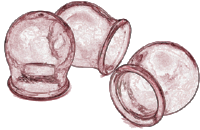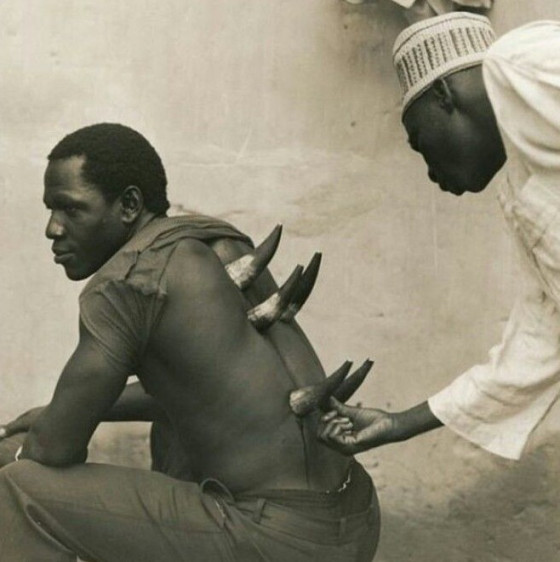Cupping
Welcome to our comprehensive guide on therapeutic fire cupping, an ancient healing practice that has been used for centuries to promote wellness and alleviate a variety of ailments. Fire cupping involves placing heated cups on the skin to create a vacuum, which enhances blood flow, reduces muscle tension, and accelerates the body's natural healing processes. Explore the benefits, techniques, and history of this powerful therapy, and discover how it can rejuvenate your body and mind. Whether you're seeking relief from chronic pain, stress reduction, or simply a holistic approach to health, fire cupping offers a unique and effective solution.
Ancient Egypt: Cupping is believed to have been practiced in ancient Egypt around 1550 BCE. Archaeological evidence suggests that cupping was used to treat various ailments, and illustrations on papyrus scrolls depict the cupping process.
Chinese Medicine: Cupping has been an integral part of Traditional Chinese Medicine for over 2,000 years. It is mentioned in ancient Chinese medical texts, including the "Huangdi Neijing" (Yellow Emperor's Inner Canon). In TCM, cupping is used to balance the body's vital energy (Qi), improve blood circulation, and alleviate various conditions.
Ancient Greece and Rome: The ancient Greeks and Romans also practiced cupping. Hippocrates, the ancient Greek physician often referred to as the "Father of Medicine," mentioned cupping in his writings. Additionally, the renowned Roman physician Galen advocated for the use of cupping to treat a variety of ailments.
Islamic Medicine: Cupping became part of Islamic medicine and was practiced by prominent physicians in the Islamic Golden Age, such as Avicenna (Ibn Sina) and Al-Razi (Rhazes). Islamic scholars contributed to the refinement of cupping techniques and their applications.
Traditional Arabic Medicine: Cupping spread throughout the Arab world, with practitioners incorporating it into traditional healing practices. It became an established therapeutic modality in regions influenced by Islamic medicine.
Traditional Korean and Japanese Medicine: Cupping is also found in traditional Korean and Japanese medicine. In Korea, it is known as "Buhang" or "Bogwan," and in Japan, it is referred to as "kyukaku" or "bekam" in Malay.
Contemporary Usage: While cupping has ancient roots, it has experienced a resurgence in popularity in contemporary times. It is practiced in various forms globally and has gained attention through its use by athletes, celebrities, and individuals seeking alternative therapies. The therapy is used by practitioners of complementary and alternative medicine worldwide.
Cupping techniques can vary, but the basic concept involves creating a vacuum within cups, often through the use of fire, and placing them on the skin to create suction. The suction stimulates blood flow, promotes healing, and is believed to balance the body's energy. Cupping continues to be a versatile therapeutic modality, used in both traditional and modern healthcare settings. It persisted as a therapy in mainstream medicine in the west into the early 20th century, appearing as a barber shop service across Europe and New England and it is still popular among eastern European communities today.
Fire cupping is performed by heating the inside of a cup with a small torch and placing it on the body before it cools, creating a slight vacuum and drawing the skin into the cup. Cups can be made of ceramic, stone, horn, wood, or plastic, but are most often glass. The procedure is effectively a myo-fascial release, it increases local circulation and it dilates the pores. This practice stimulates a healing response from the body. It can be used in the case of minor sprains or strains, for sore areas in the joints or muscle, or most commonly for the onset of the common cold to reverse the disease progression. In the traditional sense, cupping is used to draw out cold from the body. It is useful to treat painful joints, fatigue, and many other disorders associated with cold.
In some cases cupping is used to let blood. The practice of blood letting was never as extreme in the far east as it was in Europe and America, where pints of blood may have been drained, but it was still practiced. The Chinese recognized the damage caused by blood loss and employed techniques which let only small amounts of blood at a time. The practice of letting blood with cups is still a popular modality in traditional Chinese, Jewish, and Islamic medicine. Today this practice is not as common in the United States, but is only used in certain instances such as acute swelling and inflammation from trauma.
According to traditional theory, cupping is useful to eliminate cold from the skin and muscles. This applies in the every day colloquial sense of "catching a cold", where cups are applied to the bladder channel on the upper back at wind gate (UB 12) where pathogenic cold begins its progression in the body (often marked by a stiffness in the neck and upper back), but it also applies to cold anywhere in the body. Cold may be thought of as poor circulation, limited mobility, stiffness, pain, and a literally cold feeling to the touch. In this way, cupping is used as an adjunctive therapy during acupuncture treatments or as a stand along treatment method.




